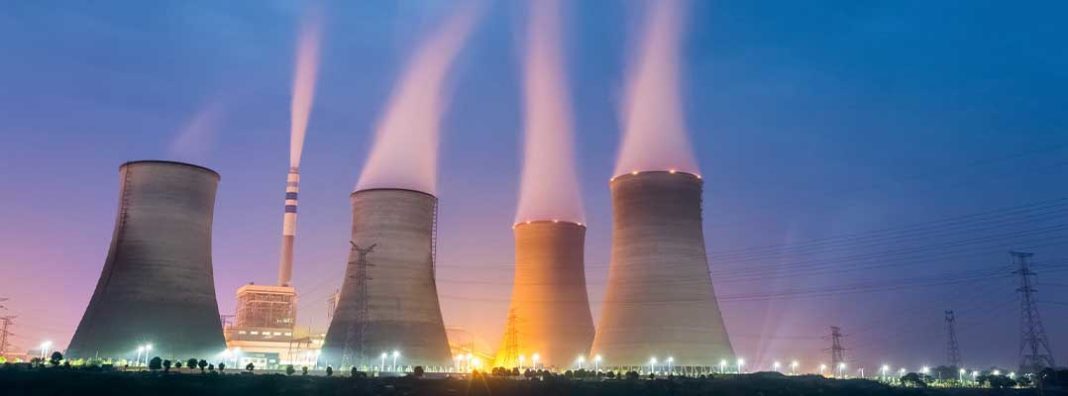
Ask most people what they think about nuclear power these days, and the odds are that the conversation will involve some discussion of dangerous radioactive waste and nuclear meltdowns. For over half a century, nuclear energy has played a significant role in both U.S. and international pop culture. Still, most movies, comic books, and television have focused on nuclear as a high-risk technology. Numerous movie franchises from Batman to James Bond have used nuclear-weapon-wielding villains as existential threats. Godzilla, a giant dinosaur-like creature that feeds off of nuclear radiation, has been the foundation for several new movies in the past decade or two. Notable comic book heroes like the Incredible Hulk, the Fantastic Four, and Spiderman owe their extraordinary powers to radiation. More recently, HBO’s hit drama Chernobyl shows what happened at the nuclear reactor meltdown in Ukraine.
There is something about the splitting of an atom and harnessing that energy to power our society that still feels very much based on science fiction. Perhaps that is why it has captured the minds and imaginations of so many writers and science fiction fans. The reality of nuclear energy, however, is rooted in sound scientific efforts. Separating the facts from the fiction is key to understanding that nuclear is not only a viable, low carbon baseload power source but is also one of the safest options we have for powering our future.
Public Perceptions
Ina recent paper published in the Journal Energy Policy earlier this year, scholars set up an experiment to test how public perceptions of nuclear power affected people’s preferences for nuclear power generation. The research involved two groups of people who were asked to build an energy portfolio for the US in the year 2050, which would meet total energy demand while also reducing current emissions by 50 percent. Participants were given six-generation technologies to build from — wind, solar, nuclear, coal, coal with CCS, and natural gas. Each participant was also given important information about each technology, including various risk characteristics and emissions profiles.
The differentiating factor for the two groups was whether or not the participants knew what type of technology they were using. Information for the control group was labeled with the corresponding name of the technology. Still, the experimental group only received the information with no label connecting it to a specific technology.
The researchers discovered that the group of participants working purely based on risk and emission information included 40 percent more nuclear power in their 2050 generation plans than the control group. As it turns out, when you look at it by the numbers, nuclear comes out ahead of other energy sources in a lot of ways. It is a low-carbon emission system, it is incredibly efficient — 92 percent of all energy produced in a nuclear plant is converted to usable power, compared with 26 percent for solar, 33 percent for wind, and 56 percent for natural gas — and it is very safe. When you consider the number of deaths caused by various energy sources, nuclear ties natural gas as the lowest death rate per unit of energy produced. Nearly 100 percent of the deaths attributed to nuclear come from the Chernobyl meltdown in Ukraine, which arguably do more to reflect the incompetence of the Soviet government than the risk of nuclear technology. The Chernobyl reactor was a flawed design, developed by the USSR, driven by Cold War politics, and severed from the broader scientific nuclear community that existed in the U.S. and Western Europe at the time. It also lacked many of the safety features built into U.S. nuclear reactors.
The Real Risk of Misperception
Fear about nuclear risks has also driven policymaking around the world and, in some instances, proven to be much more deadly than nuclear accidents. The recent meltdown at the Fukushima-Daichi nuclear plant in Japan provides a clear, but sad, example.
The Fukushima meltdown is only the second full meltdown of a nuclear reactor to ever have occurred (the Three Mile Island meltdown, often referenced along with Chernobyl and Fukushima, was only a partial meltdown, releasing negligible amounts of radiation due to effective safety systems and a well-trained operations staff). The Fukushima plant, which is located on the Japanese coast, was hit by a tsunami and flooded, causing it to lose power and any ability to cool the reactor, leading it to overheat.
When the meltdown occurred, the Japanese government required around 154,000 people to evacuate from the area for fear of radiation exposure. While the collapse itself did not lead to any direct deaths, it is estimated that this evacuation alone led to the deaths of around 2,200 individuals, many as a result of psychological distress, poor living conditions in shelters, and suicide. Nearly 2,000 of those lives lost were elderly individuals over the age of 65. Nuclear experts have since argued that the risk from radiation was overstated and the evacuation was unnecessary, or that the amount of time residents were kept away from the site should have been drastically reduced.
Philip Thomas, a professor of risk management at the University of Bristol, co-authored a paper that examines the costs and benefits of relocating populations after major nuclear meltdowns. The authors find that the radiation risk for communities living near the Fukushima plant was lower than the health and financial costs of relocating those populations. According to Thomas,
“With hindsight, we can say the evacuation was a mistake. We would have recommended that nobody be evacuated.”
Following the evacuation, Japanese officials decided to shut down all nuclear power generation in the country as a precautionary step against further meltdowns. Much like the evacuation, this was a fear-based approach to avoiding further accidents. The result, however, was likely much more costly in terms of human life than the risk of an additional meltdown.
A new paper from economists at Columbia University, Nagoya City University, and the University of Verona estimated that shutting down Japan’s entire nuclear fleet — which made up over 30 percent of electricity generation — raised electricity prices in some regions by 10 to 40 percent while increasing reliance on fossil fuels. High electricity prices can have an adverse impact during periods of extreme heat and cold on individuals less-able to cope with extreme temperatures, such as the elderly. According to the authors, the increase in electricity costs contributed to nearly 1,300 deaths between 2011 and 2014. That number is also likely underestimated because their sample only included 28 percent of the population.
Closer to Home
Though the impacts of nuclear fear have not been as impactful on public policy here in the U.S., misperceptions about nuclear energy and waste remain barriers to nuclear power implementation. Notable green energy advocates and politicians such as Bernie Sanders and Alexandra Ocasio Cortez are opposed to considering nuclear in their green energy initiatives despite its benefits. Bernie Sanders has claimed that the risk of toxic waste from nuclear is not worth the technology’s benefits. However, nuclear waste is currently safely stored at sites around the country in dry cask containment cells. These cells are so safe that if you were to stand face to face with one, you would receive no more radiation than you do staring at your microwave, waiting for your leftovers to finish warming up.
There is no reason to oppose nuclear energy purely for safety or environmental reasons. History has proven it to be one of the safest and most efficient energy production technologies available to us. History has also shown us that misperceptions about nuclear technology have been far more costly for humanity than nuclear energy production itself. Scientists and engineers figured out how to split the atom, harness its energy, and convert it to usable electricity. They continue to improve reactors and safety systems. This is not science fiction. This is reality. This is an opportunity for a future of clean, sustainable electricity.

